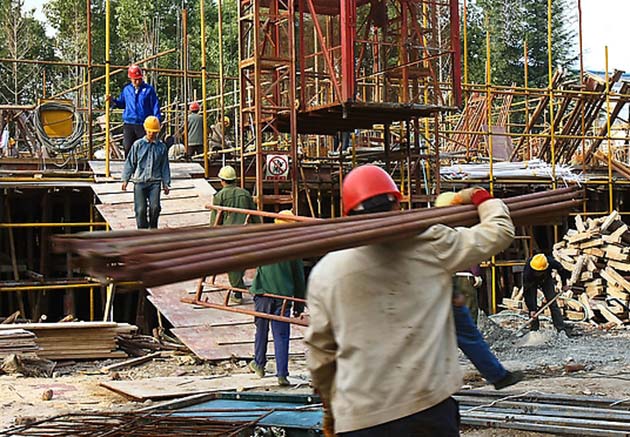Every project in the construction industry has a certain time limit. From a few months to a few years, construction facilities and safety protection facilities have changed greatly. However, this time is relatively short, and the operation of each part is also short, which is easy to make management and construction personnel have temporary ideas, and paralyze safety hazards such as improper implementation of protective facilities during construction. It can pass, and for each building from foundation piling, main engineering to roof decoration, the unsafe factors at different periods of time must change with the progress of the project. In response to these changes, the construction safety protection facilities must be continuously changed, supplemented and improved. , Ability to ensure safe production.
With the increase of high-rise buildings and tall scaffolding, incidents of people falling from heights on construction sites have occurred from time to time, and accidents caused by falling objects and object strikes have become increasingly noticeable. Therefore, everyone must strive to control and reduce the occurrence of major injuries and fatalities in construction, realize construction and production safety, and strive to ensure the basic stability of construction safety and production. To avoid this phenomenon, strengthening construction safety protection measures is the key.
Safety equipment standard:
All personnel engaged in multiple operations or working in multiple labor environments should be equipped with labor protection equipment according to their main types of work and labor environment. If the labor protection equipment provided is not applicable when engaged in other types of work or in other labor environments, other labor protection equipment should be equipped or borrowed.
The main requirements are as follows:
1. Provide dust-proof masks for some types of workers, and gauze masks shall not be used as dust-proof masks.
2. The issuance of anti-virus protective gear should be based on the types of poisons that operators may be exposed to, and the corresponding canister (box) should be selected accurately. Before each use, it should be carefully checked whether it is effective, and the canister should be replaced regularly according to the standard. box).
3. Gloves made of canvas, yarn, velvet, leather, rubber, plastic, latex and other materials are collectively referred to as “labor protection gloves”. The employer should prevent cutting, grinding, burning, scalding, freezing, and freezing during the work. For the actual needs of electric shock, static electricity, corrosion, water immersion, etc., gloves with different protective properties and materials are equipped.
4. “Hearing protector” is the collective term for earplugs, earmuffs and noise-proof helmets. The employer can equip operators according to the intensity and frequency of noise in the workplace.
5. In addition to replacing the insulating gloves and shoes on schedule, check the insulation performance before each use and retest the insulation performance every six months. In addition, safety helmets and safety shoes should be worn at the construction site in accordance with regulations.
6. For work types where the eyes may be damaged by the splash of iron filings and other debris, ordinary glass sheets are fragile after being impacted, which will cause indirect eye injuries to the wearer, and anti-impact glasses must be worn.
7. Relevant personnel such as production management, scheduling, security, safety inspection, internship, and foreign visitors should be equipped with corresponding labor protection equipment according to the production areas where they often enter.
8. When the production equipment is damaged or fails, in the workplace where toxic and harmful gases may leak, in addition to the regular labor protection equipment for the operators, the necessary anti-virus protective gear should be placed in a conspicuous place on the spot to prepare for escape and rescue. Should be used urgently. Employers should also have dedicated personnel and special measures to protect them in a good standby state.
9. Safety nets must be erected in high places of construction sites in accordance with regulations. Operators should choose and wear appropriate safety belts according to different operating conditions.
10. Considering that a type of work may have different operating environments, different actual working hours and different labor intensity in different enterprises, as well as differences in the climate environment and economic conditions of various provinces and cities, the types of labor protection equipment required by each type of work are The equipment standard does not specify the use period of labor protection equipment. When formulating the province’s equipment standards, the provincial comprehensive management department of production safety will issue additional labor protection equipment and specify the use period according to the actual situation.





